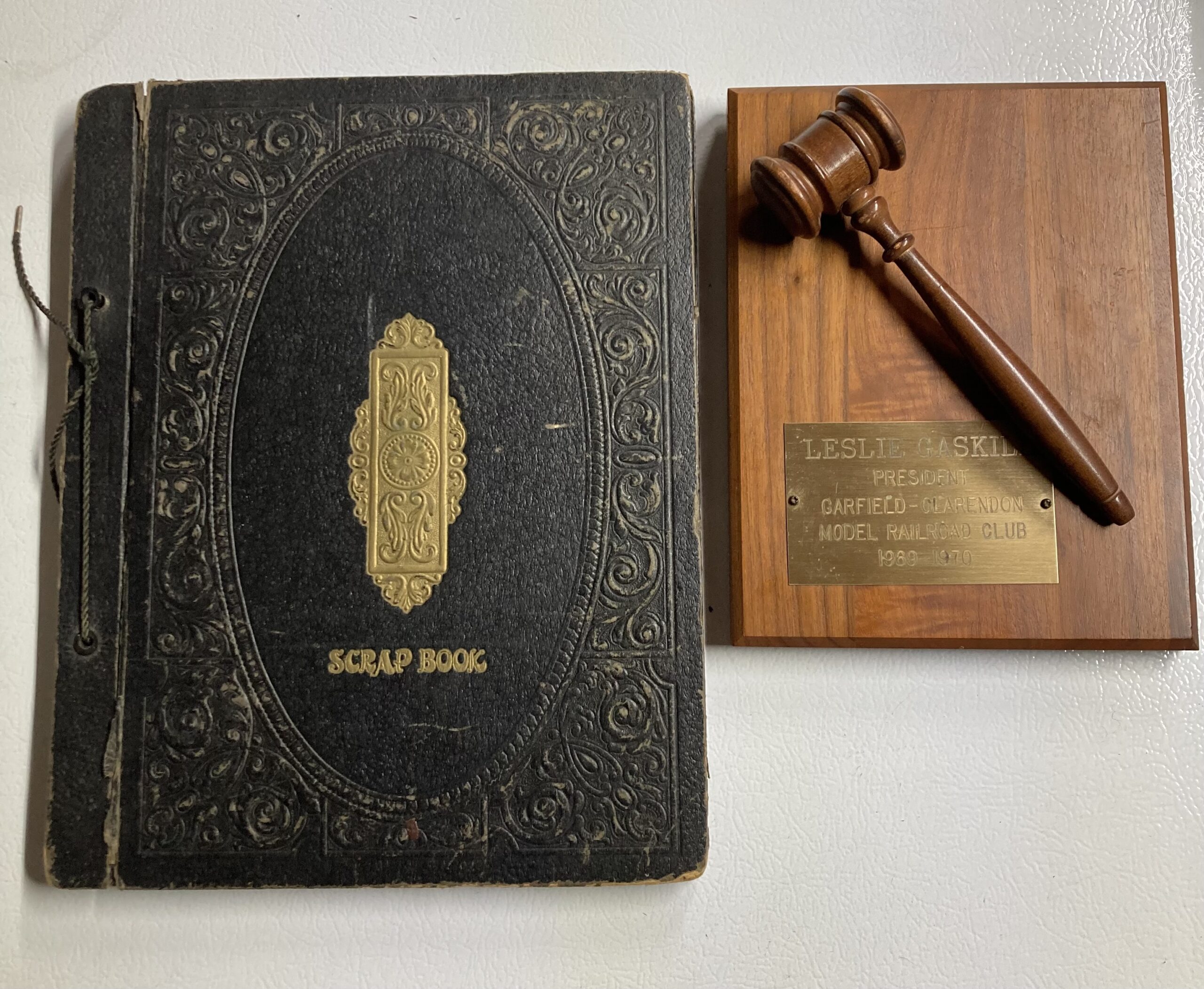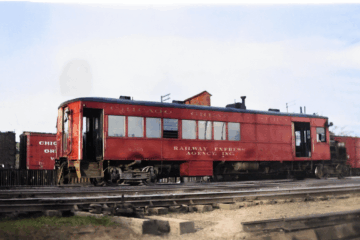A very common practice and a rather fun activity to do as a kid, perhaps in grade school or at home, was to start a scrapbook. However, historically, it was not uncommon for adults to have scrapbooks, too. Many scrapbooks turned into photo albums when snapshot photography became affordable for consumers. The Kodak Brownie Box Camera was released early in 1900, and I am sure many railroad and modeler enthusiasts took quickly to the cameras.
As it happens, one of our cherished pieces of family history comes from a scrapbook that our Grandfather Leslie Gaskill put his memorabilia in the pages over many years from his early model railroading days from the 1930s forward. Consequently, we want to share a bit of the Grandparent’s journey, which shares his activities and lifelong friendships they had in the Chicago area.
The unusual nature of a scrapbook is the fact that it is not a narrative. It does not read like an abstract, but it connects many concepts across time. Thus, a careful and slow read of each artifact eventually gives one a full picture of things that were very meaningful to the individuals that was kind of like a log book but not like a diary. One can glean their social life and recreational time interweaved with their profession.
In this scrapbook I would not have to tell you that he was a motorman operator for the Chicago Surface Lines or the fact that he was an expert with the equipment having complete access to the shops and depots. But all that translated into his model building work through the depression and World War II, when “scratch building” and doing the engineering of HO and O Scale gauge models was a necessity due to material shortages and the like.
I do not think there is anything comparable in the Internet Age we live in today. Entries into the scrapbook were well considered, and no junk cluttered the pages. You could say the memories, articles, and photos saved were the highlights of life.
Given Les was a lifetime model railroader and railroad fan, this scrapbook contains a legacy of information on the club he started, which is still healthy and viable for young and old. This club is the Chicago Garfield Clarendon Model Railroad Club. (If you plan to visit this club, look for “Gaskill Run” which was named after our grandfather.). An early message in the form of a short letter from Hubert Loewenstein to Leslie gleamed the idea to form the club. This scrapbook has a healthy number of newspaper articles about who the early members were, what they did, and how they ran trains.
The letter reads as follows:
“Mr. Gaskill,
Having learned that you are interested in model railroading, I would like to invite you and any of your friends who may be interested to aid in the formation of an HO club. Quarters are available rent free and a sponsor has been secured. Our first meeting will be held Friday, February 7th at 8 PM in the craft shop in the Gold Dome Building in Garfield Park. I hope you can and will join us then.”
H. Loewenstein
3539 W. 5th Ave,
V.B. 9457
One will garner by reading this scrapbook that Les was very much involved in the local model railroading community. He was well traveled, participating in the NMRA both regionally and nationally, whereever regional or national conventions took place, like Seattle, Atlanta, Chicago, or St. Louis. He also served as the circulation manager for the Midwest Region Waybill for a good number of years. And suffice it to say, many times the paint he used on his O Scale Traction Models came directly from the CSL or CTA shops that were used on the actual prototype equipment. As a result, we still have many drawings and blueprints he obtained from the engineering departments to help in making his models to prototype standards. Trolley Car #144, which he drove and trained other operators on is preserved at the Illinois Railway Museum. I think you will enjoy this book by our grandparents and the many friends they had over the years in the hobby.
What a great legacy to have studied the model railroading hobby under my Grandfather literally since I was 6-months old. When I was young, he would sit me in the middle of his layout and put a small train in each hand. That activity would occupy me so as not to touch the more delicate items. It is my honor to carry on the tradition of sharing the knowledge I gained with other modelers, and carry on the interesting traditions with the All Nation Line business. Life is funny, isn’t it?




